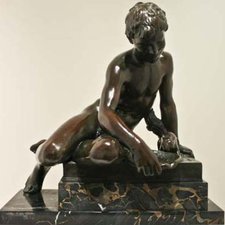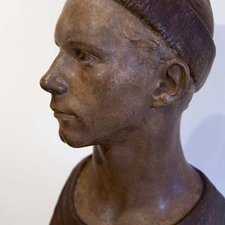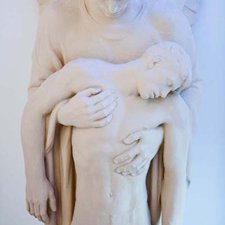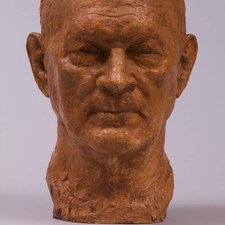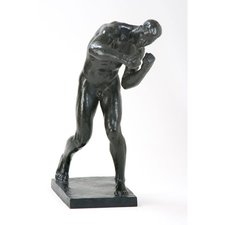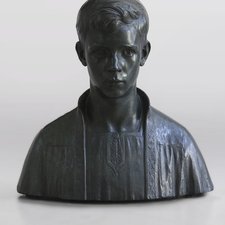Walker Hancock
1901 - 1998
Sculptor Walker Hancock was a long-time friend and advisor to the Cape Ann Museum and the institution is fortunate to have a number of his most important works in its permanent collection. Born in St. Louis, Missouri, Hancock made his home in the Lanesville section of Gloucester and devoted his long and distinguished career to capturing the spirit of the human figure. His subjects were diverse, ranging from prominent American political and military figures, to important artists, to his neighbors and friends in Lanesville.
Walker Hancock told me that when he first came to Lanesville in the summer of 1920 to study under Charles Grafly, he came down from Gloucester by trolley car, and when he stepped off and looked around, said to himself, "This is the place for me."
He lived that summer with the Frisbees (in Folly Cove), however, and he said that all of them, boarders and Frisbees alike, sat around a long table, with good food and good talk...
—Morris Reed Robinson, Some Artists Who Called 'Squam, Lanesville, and the Folly "Home," 1973
St. Louis-born Walker Hancock was drawn to Folly Cove in 1920 by the possibility of studying with Charles Grafly. Too shy to speak to the famous sculptor, the nineteen-year-old left without making contact. He enrolled in Grafly's class at the Pennsylvania Academy of the Fine Arts that fall and returned to Cape Ann the following summer at Grafly's invitation.
Hancock continued to study with Grafly for several years. One summer, the older sculptor left his Folly Cove studio in Hancock's care. Hancock took this opportunity to create a head. The resulting sculpture, Toivo Heiberg, won him the prestigious Prix de Rome in 1925. The prize allowed Hancock to study for three years at the American Academy in Rome.
Hancock returned to the United States in 1929. He immediately called Grafly and arranged to meet him a few days later in Philadelphia. The meeting never occurred. On the station platform in Philadelphia, Hancock learned that Grafly had been struck by a hit-and-run driver. Before his death two weeks later, Grafly asked the Pennsylvania Academy to appoint Hancock his successor. Hancock's second career as a teacher had begun.
While visiting Lanesville in the summer of 1930, Hancock discovered that one of the best swimming quarries was for sale at a reasonable sum. He purchased it and later built a home and studio nearby. It was here that he brought his bride Saima Natti, a Lanesville native, in 1943.
Over Hancock's long and remarkable career, he has created numerous monumental sculptures including the Pennsylvania Railroad War Memorial in Philadelphia and the Stone Mountain Memorial in Georgia. His subjects have included presidents George Bush, Abraham Lincoln and James Madison; vice-presidents Hubert Humphrey and Gerald Ford; poet Robert Frost; and General Douglas MacArthur. His works grace the Library of Congress, West Point, the Great Americans Hall of Fame and the National Cathedral.
- Interview with Walker Hancock conducted April 5, 1989, discussing his exhibit and pieces. Click here for interview transcript.
